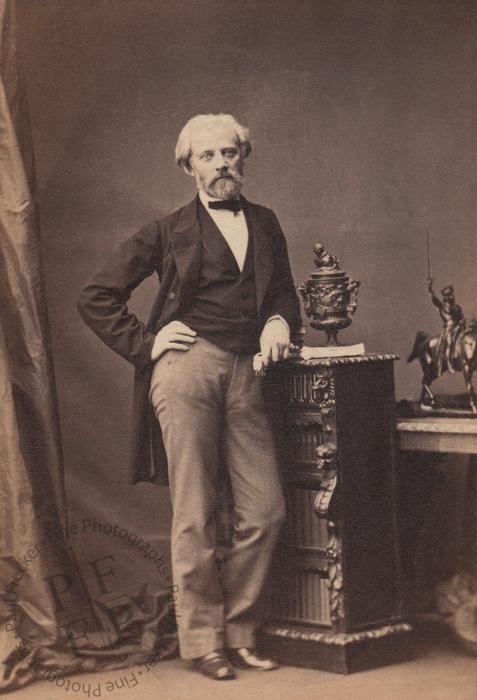Rudolf Lehmann
(1819-1905)
21 April 1861
Volume 3, page 130, sitting number 3208.
Born at Ottensen (now a part of Hamburg) on 19 August 1819, Wilhelm August Rudolf Lehmann was the son of artist Leo Lehmann.
Rudolf and his elder brother Henri studied in Paris at the École des Beaux-Arts, in Rome, and with the painters Peter von Cornelius and Wilhelm von Kaulbach. Rudolf's painting The Blessing of the Pontine Marshes by Sixtus V was shown in Paris in 1846 and is now in Musée des Beaux-Arts in Lille.
Lehmann settled in London and became a British citizen. He married Amelia Chambers, daughter of the Scottish author and naturalist Robert Chambers, who in 1844 caused a sensation when he anonymously published his Vestiges of the Natural History of Creation.
Amelia’s sister Nina married Lehmann’s younger brother Frederick. The extended social circle of the two couples included Robert Browning, George Eliot, Charles Dickens, Wilkie Collins, Lord Leighton and John Everett Millais.
In 1894 Lehmann’s memoir An Artist’s Reminiscences was published in 1894.
Rudolf Lehmann died at his residence in Bushey, Hertfordshire, on 27 October 1905, leaving an estate valued at £34,491. He was buried in Highgate Cemetery.
‘Mr Rudolf Lehmann died at Bushey on Friday at the age of 86. Mr Lehmann, who was father of the celebrated composer Liza Lehmann, was born at Oltensen [sic], near Hamburg, and his father, who was a successful miniature painter, encouraged him — with little success — to write verse and to write music before inducing him to study drawing. He went to Paris to study and there became on intimate terms with Meyerbeer, Liszt, and Chopin; from Paris he proceeded to Rome, where he painted his first salon picture, and sold it to the Duc of Montpensier for 2000 francs. At the age of 28 Lehmann returned to Paris, and served as a volunteer during the revolution of ’48. During this time he met Lamartine, and, later, he illustrated his friend’s poem “Graziella,” making use of Lord Leighton as a model for the purpose. In 1850 he came to London, and here he finally settled down. He numbered among his sitters the Prince of Wales — now, of course, the King — the Emperor Frederick, the Duke of Cambridge, Gladstone, Manning, Tennyson, the Brownings, Dickens, George Eliot, Huxley, Leighton, and Millais. He also painted portraits of Heine, Von Ranke, Chopin, Meyerbeer, Liszt, and Verdi — to whom he bore a curious likeness himself’ (Nottingham Guardian, 30 October 1905).

